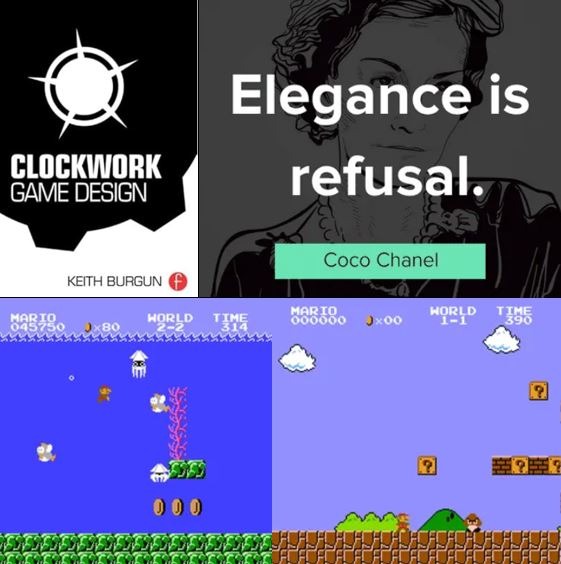CREATIVE LEARNING EXPERIENCES THAT CHANGE BEHAVIOR
Refusal is the Name of the (Video) Game & Effective Learning Experiences
The wisdom of Coco Chanel applies equally to elegance & education.
LEARNER MOTIVATION
5/27/20252 min read


In chess, you move the pieces. Why? To take control of an area.
In Tetris, you position pieces. Why? To create lines.
In Super Mario Bros., you jump. Why? To traverse obstacles.
The core purpose of a game, the why, isn’t the same as the core action (the what), but combining them – jump to traverse obstacles – gives the entire experience a level of focus which borders on the extreme…extremely popular. In the case of Super Mario Bros., 40-million-sold-worldwide popular. So beloved, in fact, that an unopened copy went for USD 2,000,000.
The thing about Super Mario Bros. is that it’s really easy to learn: you traverse obstacles by doing one thing: jumping. You jump…
…to get around
…to avoid monsters
….to get over pits
….to reach the flagpole at the end of a level
…to kill monsters (jump on their heads)
…to bump the underside of power-up blocks & unlock power-ups – which you can combine with, yes, jumping to smash bricks
In this system, there is a single core action...drumroll: jumping. “Players quickly understand how this jump action itself works, and since most of the actions are derived from this core mechanism, the overall system is easier to learn,” says game designer Keith Burgen in the excellent Clockwork Game Design (Focal Press, 2015). “Further, a core mechanism design pattern allows a game system to have a kind of coherence that it otherwise would not be able to achieve.”
He adds that when games feel “clunky” to play even after you’ve gotten the rules down, it's probably because there is no single clear core mechanism. “In game design, our thesis statement is our “core mechanism”— the action or type of action that the player uses most frequently in a game... And it’s this central action that encapsulates the spirit of what a game is really about at its heart.”
Obviously, this translates directly to learning experiences. To effectively catch the learner's attention. To keep 'em motivated to keep at it. To change their behavior. Which starts with behavior in the learning experience: the key thing they do. The jumping action. Once you're clear on your "to traverse obstacles", your why, you can become clear on your "by jumping" - the how. The core mechanism. And not much else. “This gives us a metric by which we can judge the game’s other rules," adds Burgen. "We do this by asking: does this mechanism support the core mechanism, or not? If it does not, then chances are it’s something we should consider removing from the game.”
Which Coco Chanel (possibly) summed up succinctly with elegance is refusal. In learning, too, as it turns out.